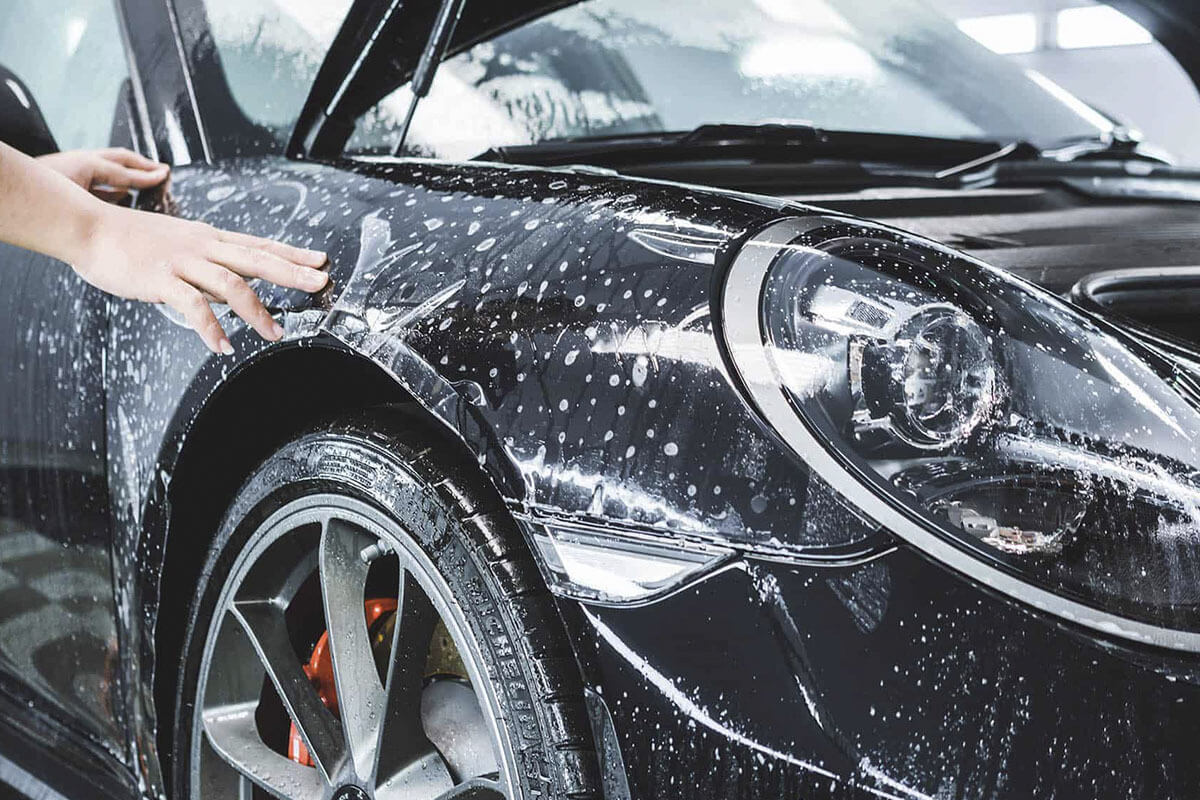In the world of automotive care, protecting your car’s paint is not just about maintaining its aesthetic appeal; it’s also about preserving its value and ensuring longevity. One of the modern solutions to this age-old problem is Paint Protection Film (PPF). But what exactly is PPF, and how does it work to safeguard your vehicle’s exterior?
Understanding Paint Protection Film (PPF)
Paint Protection Film, often referred to simply as PPF, is a transparent, urethane material that is applied to the exterior surfaces of a vehicle. Its primary purpose is to shield the paint from damage caused by rocks, road debris, scratches, and other environmental elements. PPF is designed to be highly durable yet flexible enough to conform to the contours of the vehicle seamlessly.
How PPF Protects Your Car’s Paint
Impact Resistance: One of the most significant benefits of PPF is its ability to absorb impacts. As you drive, your vehicle is constantly bombarded by small stones, gravel, and insects that can cause chips and pits in the paint. PPF acts as a sacrificial barrier, absorbing the impact and preventing these objects from reaching the paint surface.
Scratch Resistance:
PPF also provides a level of scratch resistance, which helps keep your car looking newer for longer. Everyday encounters such as brushing against bushes, accidental key scratches, or even car wash brushes are less likely to leave permanent marks on the PPF-covered areas.
UV Protection:
Continuous exposure to sunlight can fade and damage automotive paint over time. High-quality PPF includes UV inhibitors that block harmful ultraviolet rays, thus preserving the color and finish of your car’s paint.
Chemical Resistance:
PPF is resistant to staining and etching caused by bird droppings, tree sap, and other acidic substances. This protection not only maintains the appearance of your vehicle but also reduces the need for intensive cleaning and detailing.
Types of PPF
PPF comes in various types and grades, ranging from basic protection for vulnerable areas to full-body wraps that cover the entire vehicle. The choice of PPF depends on factors such as budget, desired level of protection, and aesthetic preferences.
Partial Coverage:
This option focuses on high-impact areas such as the front bumper, hood, side mirrors, and door edges. It offers targeted protection where it’s needed most, often at a more affordable price point compared to full-body wraps.
Full Body Wrap:
For comprehensive protection, a full-body PPF wrap covers every painted surface of the vehicle. This not only shields the entire car but also ensures a uniform appearance without visible seams or lines.
Installation and Maintenance
Installing PPF requires skill and precision to ensure a flawless finish. It typically involves cleaning the vehicle thoroughly, cutting the film to fit each panel precisely, and carefully applying it to the surface using specialized tools. Professional installation is recommended to avoid bubbles, creases, or misalignment.
Maintaining PPF is relatively straightforward. Regular washing with a mild automotive detergent and water helps keep the film clean and free from dirt buildup. Avoid using abrasive cleaners or wax products containing petroleum distillates, as these can degrade the film over time.
The Evolution of PPF Technology
Over the years, advancements in PPF technology have led to improved clarity, durability, and ease of maintenance. Modern PPF formulations are designed to be self-healing, meaning they can repair minor scratches and swirl marks when exposed to heat from the sun or a heat gun.
Additionally, some PPF products feature hydrophobic properties, causing water to bead and roll off the surface more easily. This not only enhances the appearance of the vehicle but also makes it easier to clean.
Conclusion
Paint Protection Film is a valuable investment for any vehicle owner looking to preserve the beauty and resale value of their car. By providing a robust shield against chips, scratches, UV rays, and environmental contaminants, PPF ensures that your car’s paint remains in pristine condition for years to come. Whether opting for partial coverage or a full-body wrap, choosing PPF means choosing peace of mind knowing that your vehicle is well-protected on the road and beyond.

